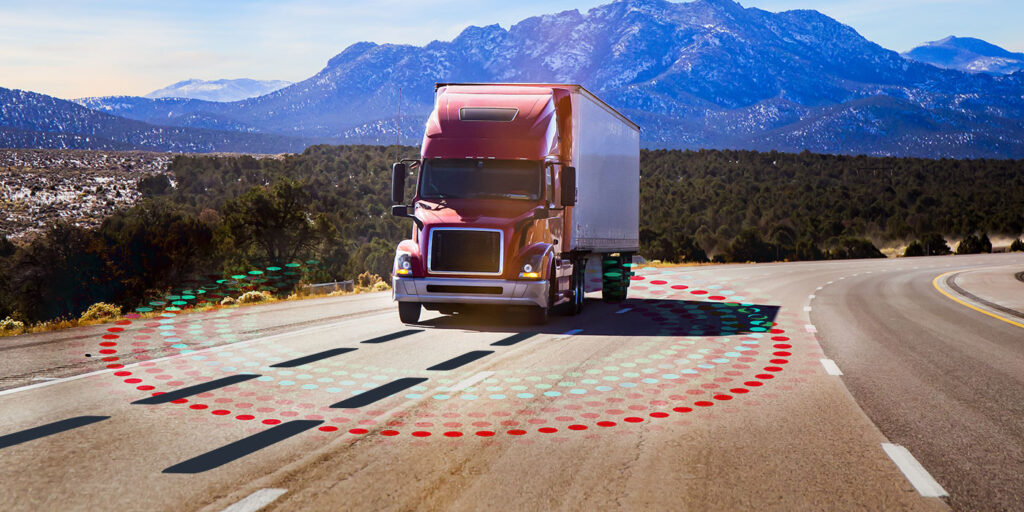Technology can be a wonderful thing–when it works. When it doesn’t, that same wondrous technology can lead to unintended consequences, including complete mechanical failure. Having a deeper level of understanding how the pieces work together can help us navigate more effectively around all those devices to deliver the benefits we had hoped to achieve. The same can be said about commercial vehicles. New and improved technologies have been arriving on commercial vehicles at breakneck speeds. As fleets become more complex, so does repairing them.
The ADAS revolution
Among the fastest growing, transformative technology is Advanced Driver Assistance Systems(ADAS)–a complex suite of cameras, radar systems, sensors and control modules. When working properly, ADAS improves situational awareness and initiates countermeasures to keep drivers safe. ADAS components can be found in many of today’s commercial vehicles, including backup cameras and sensors, adaptive headlights and more. The cameras and radar assemblies on these vehicles are literally the “eyes” of the truck. For these systems to work properly, they need to have 20/20 eyesight and be looking in the right direction.
ADAS countermeasures can be passive–providing a warning or some other form of alert to the driver, or active–where the system can actually take corrective action (think: emergency braking). Making all this work properly requires a suite of cameras, sensors, radar/lidar units located around the vehicle.
Keeping on track with calibration
To keep things on track, the systems rely on precise calibration to perform correctly. The vehicle’s computer systems must accurately determine “where” the vehicle is related to other objects around it. The problem is that these systems are vulnerable because they are installed on the periphery of the vehicle, and oftentimes they have to be moved out of the way during maintenance. Even a slight nudge or shift to a sensor or camera can create havoc if not recalibrated properly.
Therefore, these devices need to be regularly tested and/or calibrated to ensure they are programmed properly. Especially concerning is that the driver may be unaware that the system isn’t operating as designed until an actual safety issue occurs. In most cases, there will be no initial indication that a vehicle was not properly calibrated–no MIL illuminated, etc. But while the vehicle is driving, the “field of view” can be slightly shifted and cause safety issues.
Consider something as routine as wheel alignment. The thrust line should always line up with the vehicle’s geometric centerline, but if isn’t aligned properly due to mis-calibration–even by a 2-degree alteration–the forward-facing camera will be looking in the direction of the thrust line and cause the vehicle to act abnormally. This miscalculation could potentially lead to catastrophic results.
In one case, for instance, an improperly calibrated camera misinterpreted an overpass as an obstruction on the side of the road such as an oncoming vehicle. The camera’s sensors indicated an imminent collision and enacted warnings and emergency braking–a hazard that could have been avoided.
When these events occur, the driver may lose confidence and disable the system altogether, which defeats the purpose of ADAS. What these examples point out is that working on the ADAS system components themselves is a skill that must be learned.
Diving deeper into calibration
Performing routine maintenance on a truck equipped with these systems in a fleet shop or outside service source requires basic knowledge of how to service/recalibrate them properly before putting the vehicle back in service. Calibration routines can vary widely by manufacturer, but they fall into two basic categories: Static calibration and Dynamic calibration. The OEM will indicate which method should be used as well as specific parameters that should be used during testing and calibration.
• Dynamic Calibration–This procedure uses a hand-held device plugged into the vehicle’s system. The vehicle is driven a specific distance at a specific speed, as specified by the OEM, in order to adapt to regular road conditions. The environment also includes clearly marked road surfaces and roadside obstacles that the camera or radar can “learn” from.
• Static Calibration–As the name implies, static calibration can take place without having to drive the car. Instead, specialized equipment is used to test each sensor or component. All ADAS tools use a series of targets that that are placed at very specific points: at specific distances from the targets, at specific heights, etc., as specified by the OEMs. One of the challenges is having enough space in the bay to accommodate these calibrations.
Having the proper tools in the shop is also vitally important, because “A King can only work with his best tools,” as quoted by T.H. White, author of the Once and Future King.
Information tools for success
Having access to accurate, vehicle repair information that consolidates ADAS information for all the components on a truck can help technicians diagnose, repair and maintain these complex systems. One popular resource is TruckSeries software from Mitchell 1, which provides comprehensive repair information for Class 4-8 trucks.
Whatever repair software you choose, the time is now to get aligned with ADAS auto repair information. Because like it or not, your shop is already in the ADAS business – and the routine work you’re performing now could impact how these systems work in the future.
Ben Johnson serves as director of product development for Mitchell 1, an industry leader in vehicle repair information software and services. He launched his career in 1979 as an automotive technician after High School and continues to maintain his own vehicles (cars, trucks, motorcycles and boats). As an industry expert, he enjoys discussing the challenges that repair shops face in a world where the vehicles continue to increase in technical complexity.













